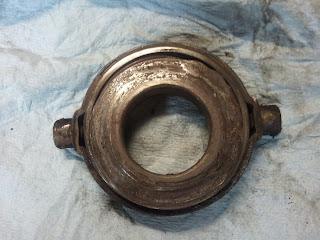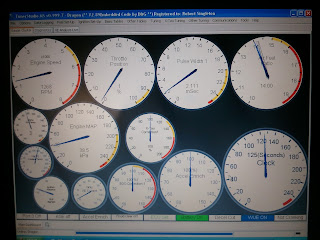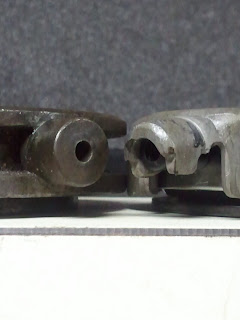Rule One: Test before you put it ALL back together.
Monday night, I got the rest of the engine wiring and hoses on, the exhaust, the bumper… Started the engine up (it cranked for about one second and lit off without touching the throttle… I love EFI)…. All looked good.
I knew I would probably need to adjust the clutch cable before taking it for a spin. That’s when I noticed that the clutch arm does not budge. At all. Well, it wiggles with the minimal play that the shaft has naturally, but otherwise, it was completely immobile.
Long story short, on Tuesday, I called AMS to consult with Steve again. He recommended that I remove all the new parts and bring them in, along with the old parts and as much other information as I could gather. Tuesday night, I fooled with it for a while, still looking for something, but pulled the parts out and got them ready to go.
This afternoon, I took everything in to AMS and we determined that everything should be all the right components. He suggested a couple of things to check concerning cable adjustment and clearances. I also consulted a couple of BTW folk. At this point, it’s a mystery to all, but my mission is to measure and test to see if I can find what’s not making up.
So, when I got home and got started, about 8PM, I first checked that the throwout bearing, fork, cable and pedal were all moving freely.
Reassembled, same thing.
I pulled it apart again. I did some measuring. I put a straight edge across the mounting face of the transaxle and measured to the face of the throwout bearing. It was 2.68 inches. I also put the straightedge on the face of the pressure plate collar thingy and measured to the engine block face that mates with the transaxle. It was 2.81 inches. These two together should mean that, once assembled, the throwout bearing should be resting about 1/8″ from the pressure plate. This corresponds with the expected range of motion for the assembled clutch.
I verified that the clutch arm has it’s full range of motion while disassembled.
I also compared the old and new throwout bearings:
Though they are constructed in rather different ways, all the dimensions that matter appear to be identical, or at least compatible.
While I had it apart, I attempted to use a steel plate and some clamps to verify that the pressure plate can indeed move when pressed. It does. There was not a reasonable way to press the clutch and verify that the clutch disk is released when it is pressed. I have in mind a custom tool that could test that, but I was not prepared to fabricate such a tool just then. I put it all back together again, with the old throwout bearing, and verified that nothing had changed.
“Insanity: doing the same thing over and over again and expecting different results.” – Albert Einstein
While I had the camera ready, I documented the free play in the clutch arm while assembled and it corresponds with what I would expect.
So, I have decided that unless some radical new information comes to light before bedtime Thursday, I am not going to be able to drive the trike to the benefit/show this weekend.
I will, however, tow it in to the show. We are auctioning off a donated paint job and this trike has the paint from a previous auction and we hope to drum up lots of interest in the auction!



























